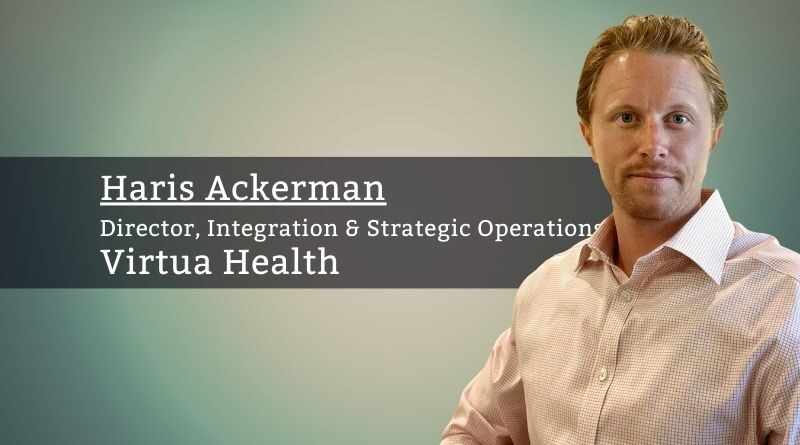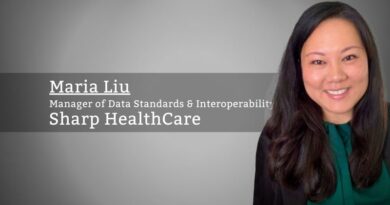What Happens When Healthcare Delivery Catches Up to Technology?
By Haris Ackerman, Director, Integration & Strategic Operations, Virtua Health
For the last decade, information and technology have become some of the most valuable “items” that exist. The twist is that information is not necessarily what you learn in school, or what you pick up from working on the job. The likes of Apple, Microsoft, and Garmin make their business on information and its capabilities.
These tech companies have invested millions, if not billions, of dollars in their workforce to specifically develop new technologies to keep people engaged and maybe even make their lives a little easier in one way or another. As a result, these companies continue to create the limits on how far technology can be pushed, develop new data systems, and enhance the experience their end users have.
Historically, the healthcare sector has lagged in its adoption of new technology. Maybe some fortunate health systems have had the opportunity to purchase the latest in scope technology, or maybe some have had the latest MRI machines and communication devices or applications. Unfortunately, some are using scopes that cost thousands, but that still only offer 720p resolution output. When we look towards where healthcare is going as an industry, we now have the tools at our disposal to use information in a secure way to better serve our patients and the communities they come from.
As health systems adopt not only increased data systems but also GPS tracking, mobile applications, and remote monitoring, the opportunities in patient experience are endless.
EMR adoption across the US has surged in the past decade – with nearly 96% of acute health systems utilizing one vs 44% in 2012. We opened the door to using technology in new ways other than just clinical documentation – and we will trigger a major change in the way healthcare is provided. These EMRs are state of the art in the basics of healthcare tech – clinical documentation, provider communication, order placing, etc. These features help patients, providers, and hospital staff alike in their daily operations. In addition, they allow for clearer, more effective operations which increases quality of care and decreases the risk of error. All the while, consumers and patients continue to, justifiably, feel more protected with their health data than “big tech” at large. According to HealthIT.Gov, nearly 84% of patients feel secure that their medical information is private. It is hospital leadership’s responsibility to continue to build on this trust, and foster secure environments, to expand on how this technology supports healthcare delivery processes.
The key to EMR technology is how it will be used to push healthcare technology utility to the next level – supported by their ability to summarize clinical data securely. With some EMRs even offering apps that allow access to medical records and real-time provider and office communication tools, the health system’s role in consumerism is poised to expand significantly.
The question becomes – Where do we expand to? We expand toward using data to increase our community’s health, decrease the inconveniences of how care is provided, and create opportunities for new ways to provide care. Six Sigma teams are present in envelope-pushing health systems that use historical data, with some predictive modeling, to improve system operations, increase quality and provide cost savings. We need to go toward using data the way much of the economy figured out a long time ago: how can we make informed decisions based on outcomes that MIGHT occur in the future?
Imagine leveraging blinded, collated patient data to identify trends in patient information that may predict the likelihood of a fall, and therefore preventing that fall? What if we can leverage active patient monitoring in the home to ensure a congestive heart failure patient is escalated to the correct clinical area before they have a significant cardiac event? We can help our patients receive more effective, comfortable, and timely care – but why stop there?
We see Uber and Dominos offer real-time tracking systems for transportation and food delivery. What if we leverage this technology, and integrate it into EMR capabilities, to increase the patient experience when it comes to home-based care? We are experiencing systems successfully implement remote patient monitoring (RPM), some even providing inpatient level of care in the home with the use of advanced monitoring systems and telehealth consults from physicians.
Healthcare won’t stop there. As health systems adopt not only increased data systems but also GPS tracking, mobile applications, and remote monitoring, the opportunities in patient experience are endless. We can bring the care to the patient in the comfort of their homes, communicate frequently with caretakers and family members, and even prevent costly hospital admissions with predictive modeling.
This lift is not easy. It will require collaboration with vendors and health systems alike. Sharing processes, creating large databases to understand patient mix and its implications, and process sharing will be crucial. Health systems’ responsibility to maintaining the highest levels of privacy for patient information will be a pillar of the technology shift in healthcare. The result will be driving down cost of care, increasing the experience the patient has, and increasing the overall quality of care provided. With healthcare costs being a major issue in the American way of life, anything hospitals can do to decrease this burden is welcome to our communities.
While the COVID19 pandemic was devastating to the entire world, it may have triggered the push that the healthcare industry needed to adapt to the times. Systems were forced to leverage and expand telehealth services and adopt new technologies faster than ever before. The silver lining here is that the patients will end up winning – more advanced services offered at lower prices while maintaining the outstanding quality US health systems are known for. We continue to push the envelope and this industry will change, for the better, to support our communities. The future is bright for the integration of technology into healthcare operations, and it will be exciting to see what happens when technology can support creative, new ways of providing care for our patients that the healthcare industry has never seen before.



